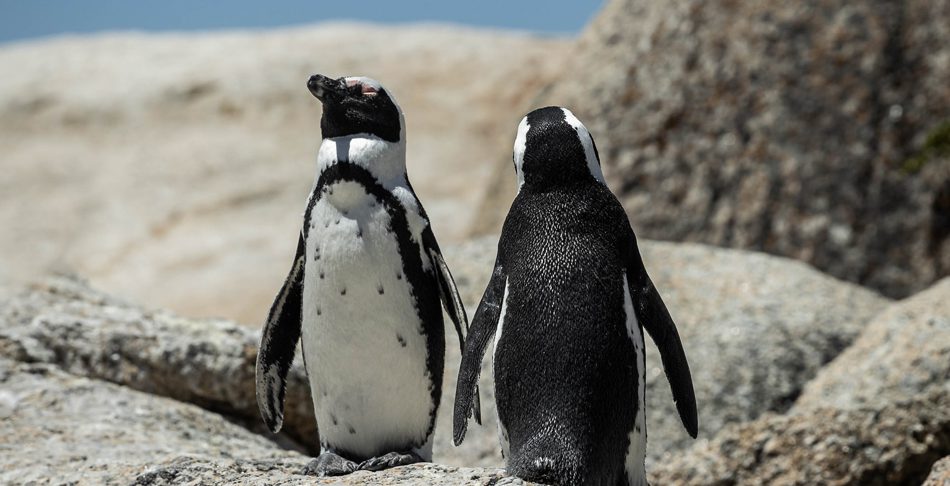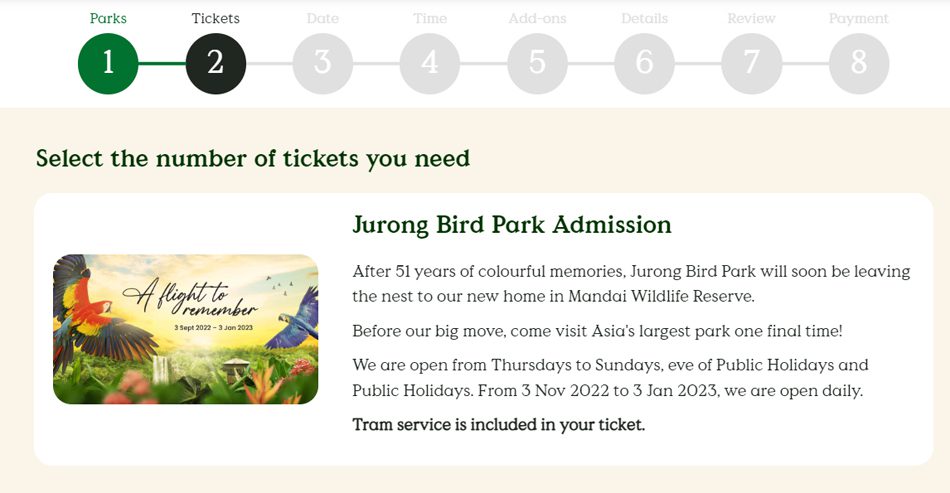Jurong Bird Park in Singapore is touted to be Asia’s largest and is worth every penny. Situated along Jurong Hill, it spreads over roughly 49 acres of land and is managed by Mandai Wildlife Reserve.
The concept of an aviary where the locals and tourists can spend some quality time amidst nature away from the daily stressors first occurred to the former Finance Minister, Dr. Goh Keng Swee, in the year 1968. In January of 1971, the bird park opened its doors for the first time to the public. There have been new constructions and extensions on the land ever since which make it an enormous and beautiful place to visit in the present day. It is home to more than 5000 birds of 400 species, many of which are endangered today.
Jurong Bird Park is not only an aviary, but a large entertainment area that houses eateries/canteen, cafes, vending machines full of soft drinks, and ice cream parlors at regular junctures, besides a play area for kids, an amphitheater, a restaurant, a souvenir shop, and even a bird hospital inside the premises.
The area is huge, and you need to prep for long walks. Remember to get into a pair of comfortable sneakers to tour the area with a hand cam. You sure get to click selfies with birds but not without a cost — each picture could cost you $85; it is a better idea to carry your own and be at liberty to go click-happy!
As you step into the property, you are greeted by queer bird caws, cries, and chirps that fill the ambiance. The walkways are lined with green foliage which is a pretty sight. Maps and helpful signboards give easy directions to whichever zone you choose to visit first. If walking tires you after a while, or you have very young kids in tow or seniors with mobility issues, you may even avail of their tram ride to give you a tour around the place.
Interestingly, you will have another unexpected guest keeping you company at various turns in the park — the iguana! It is a harmless creature that shows up now and then but is just as quick to make a disappearance in the thick greens dotting the place. The Park boasts of beautiful scenic corners where you can happily click pictures with friends and family — a hanging bridge, a waterfall, an amphitheater, and nice and clean pathways.
Singapore’s Jurong Bird Park is home to inmates like flamingos, the African Penguin, the Philippine Eagle, colorful parakeets, the Marabou Stork, the Great Hornbill, the Stork-billed Kingfisher, white-throated kingfisher, the common kingfisher, the white-breasted water-hen, the whistling duck, the common moorhen, the gray heron, the night heron, the Australian Pelican, starlings, and so many other rare species of birds.
An interesting trivia about Jurong Bird Park is that the authorities here rehabilitate injured birds found on the roadside or in people’s backyards, and release them in their natural habitat so that they do not get to stay in captivity at the Park. Kudos to their spirit of community service and efforts at reintegration. They have boards flashing in bold letters in the Park saying that they support local wildlife. Jurong Bird Park is known for conservation and eco-friendly measures like minimizing the use of plastic.
Know the Top Highlights

- Bird Feeding — This is an exciting part of the trip. Book a portion of food online and participate in the bird feeding session. It’s thrilling and fun, moreover, you get the opportunity to contribute financially to their wildlife conservation efforts in the region. Penguins at Penguin Coast, African birds at African Treetops, and lories and lorikeets at Lory Loft are the birds you will get to be familiar with. Please refer to the bird feeding sessions on their website.
- “The High Flier” Show — This is a delightful bird parade that exhibits interesting bird talents like the yellow-naped amazon singing in three different languages. You can prepare to take pictures with the show stealers like the pelicans and flamingos at the end of the show.
- “Kings of The Skies” Show — This show is going to give you some goosebumps as you watch the host playfully interacting with and positively reinforcing natural bird behaviors in the world’s most dreaded birds of prey like the vultures, the night-prowlers like the owl, the white-tailed sea eagle, Harris’ Hawk, a roost of kites, the falcon, none of them crossing over into the audience’s sitting enclosure even once throughout the show.
- Penguin Coast — This is where you find cute penguins gleefully flapping their flippers to swim through the freezing waters in the outdoor pool in a climate-controlled enclosure. The temperature is kept at a bare minimum, somewhere between 10-15 degree celsius, to house these penguins. You get to see varieties of penguins here like the African penguin, Gentoo penguin, the King penguin, the Northern rockhopper penguin, and more.
- Wings of Asia — This houses the Bali myna, the Asian fairy-bluebird, different varieties of the starling, the gray junglefowl, the straw-headed bulbul, the Santa Cruz ground dove, and many other birds of 135 species that face the risk of extinction.
- Birds of Prey — Here is where you find the larger birds of prey like the Philippine Eagle, the Marabou Stork, the Hooded Vulture, and the White-backed Vulture.
- Dinosaur Descendants — There is a play area in the vicinity where children can excavate dinosaur fossils. Big-sized birds like cranes, ratites, the saddle-billed storks, and the Northern and Southern cassowary are housed here.
- Waterfall Aviary — Walk into the world’s tallest man-made waterfall, as you cross a suspended bridge to watch the American white ibis, the Helmeted guineafowl, the purple starling, the scarlet macaw, the Nicobar pigeon, the milky stork, the black-naped oriole, the black crowned crane, and many other species.
- Parrot Paradise — This is a large noisy area that houses different species and colors of parrots from Australia, Asia, and South America. Brightly colored, huge birds in green, yellow, white, red, blue, and more – watch them at play.
- Gift Shop — You get to shop for small and big souvenirs as tokens of remembrance from the Park from the gifting shop. They have an amazing collection of stuffed toy birds like the owl, peacocks, pelicans, parrots, and macaws; bird table displays; embossed t-shirts; sippers and cups; ornamental pieces, and so much more of varying sizes and shapes of gift items to carry back home from this fantastic place.
Info on Timings and Tickets

Jurong Bird Park in Singapore will soon relocate to Mandai Wildlife Reserve. Currently, it is open between Thursdays and Sundays, and on public holidays. Its operational hours are 8:30 AM to 6 PM (the last entry is at 5:00 PM).
You need to buy tickets online for attractive discounts. The ticket prices for adults, children, and seniors are $38, $25, and $20, respectively. With a Wild Pass, local residents can enjoy further discounts of up to 20%. Complimentary tram service is included in the admission ticket.
Address, Phone & How to Reach
In the present day, Jurong Bird Park is located at 2, Jurong Hill, Singapore – 628925. Very soon it is moving to a new space at the Mandai Wildlife Reserve. For queries or feedback, you can call +65 6269 3411.
You can reach Jurong Bird Park, Singapore, by bus, subway, taxi, or private car. The SMRT and SBS transit service departs from City Hall to arrive in Jurong Bird Park. There are 630 weekly services, travel time is 1 hour, and it comes with the cheapest fare. You can avail of the direct bus service from Suntec City to Jurong Park.
The nearest MRT station is Boon Lay, and then you may walk to the bus interchange and take number 194 which will drop you right in front of Jurong Bird Park. Taxi services are steep for the pocket but they are fast. Alternatively, you can drive your car there.

